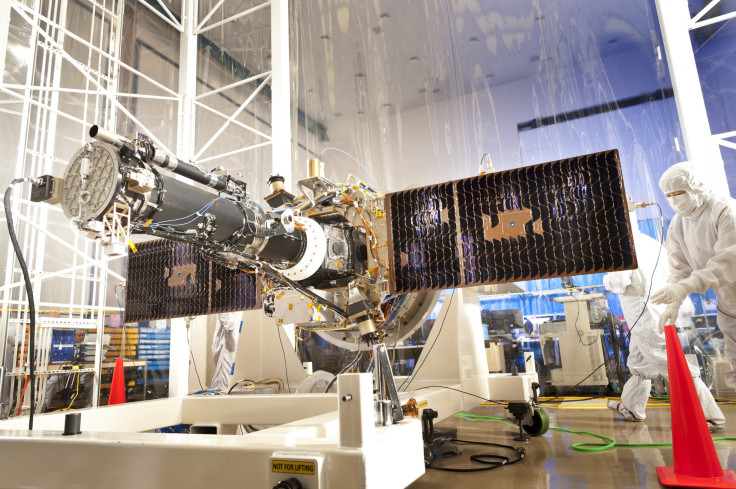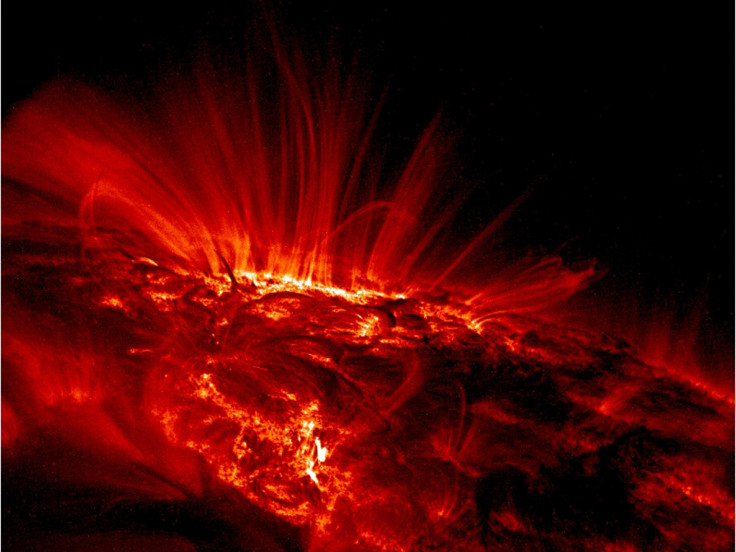NASA IRIS Launch: Solar Observatory To Answer Questions About Sun’s Ability To Create Energy
NASA will launch its newest solar observatory on June 26. The Interface Region Imaging Spectrograph, or IRIS, mission will send a spacecraft to orbit around the Earth to study how solar energy is created and transferred throughout the star.
NASA’s IRIS will observe how solar energy transfers from the Sun’s surface to the corona, the final layer of the star’s atmosphere. The IRIS spacecraft, approximately seven feet in length, will be launched into space by the Pegasus XL rocket.

The sun's corona, the extended outermost layer of the Sun's atmosphere, is incredibly hot, much hotter than the Sun’s surface and any other part of the Sun. According to NASA, energy traveling from the Sun’s surface to the corona has a starting temperature of 6,000 degrees Fahrenheit and can reach temperatures in the millions of degrees at the end of its journey.
There has been plenty of speculation surrounding the heating up of this energy and the incredibly hot temperatures of the corona, and NASA hopes the IRIS mission will give researchers a better understanding of the Sun through highly detailed observation. The focus of the IRIS mission will be the chromosphere, the second of three layers that make up the Sun’s atmosphere.
The chromosphere is basically invisible due to the incredible brightness of the photosphere, the first layer of the Sun’s atmosphere. Temperatures in this layer of the Sun’s atmosphere dramatically increase in the third layer of the Sun’s atmosphere, the solar transition region.
It is unclear why the temperatures become hotter as energy travels farther from the Sun’s surface. IRIS will observe solar features that are 150 miles in diameter, notes NASA. Adrian Daw, deputy project scientist, believes IRIS will yield plenty of surprising results.
“IRIS will show the solar chromosphere in more detail than has ever been observed before,” he said.
The IRIS spacecraft has just one ultraviolet telescope onboard that is combined with an imaging spectrograph, used to measure light in the electromagnetic spectrum. While IRIS can only focus on just a small percent of the Sun at any given time, it will have the effect of using a magnifying glass, allowing it observe features in great detail.

IRIS can also be used in tandem with NASA’s Solar Dynamics Observatory and the NASA-Japan Aerospace Exploration Agency’s Hinode. The SDO mission observes the upper atmosphere of the Sun, while Hinode observes the lower part of the Sun’s atmosphere. “It's going to look in closely, and it's going to look at that specific region to see how the changes in matter and energy occur in this region. It's going to collectively bring us a more complete view of the sun,” said Jim Hall, NASA’s Launch Services Program’s mission manager for IRIS, speaking about IRIS’ capabilities.
IRIS will be able to take photos of the Sun every five to ten seconds while recording new data every one to two seconds, according to NASA. The data and images collected by IRIS will then be fed into a supercomputer to create 3-D models. NASA’s IRIS mission is planning not only to use advanced technology for space observation but also to interpret that data. Bart De Pontieu, IRIS science lead at Lockheed Martin, said in a statement, “We’re trying to understand something that’s hidden in a fog – but now, thanks to the enormous advance of computers and sophisticated numerical models, the fog is lifting.”
Getting a better understanding of the Sun will result in a better understanding of the Earth, in particular the Sun’s effect on Earth’s climate and meteorological phenomena. Observing solar flares, which could damage equipment on Earth, could lead to new ways to protect these instruments and satellites.
© Copyright IBTimes 2024. All rights reserved.






















